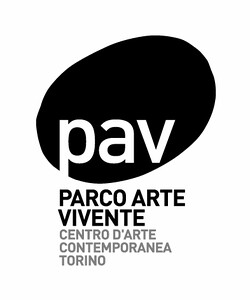The Green Tent
(Das Grüne Zelt)
November 5, 2016–March 19, 2017
Via Giordano Bruno 31
10134 Turin
Italy
T +39 011 318 2235
Curated by Marco Scotini
The Green Tent (Das Grüne Zelt), curated by Marco Scotini, may be seen as the third chapter of an ideal trilogy, completing the cycle of exhibitions with which the PAV aimed to reconstruct a genealogy of the relationship between the artistic practices and the ecological consciousness in Europe during the 1970s.
After the exhibitions Earthrise (2015) and ecologEast (2016), this project will focus on the activity of one of the most recognized artists from the second half of the last century: Joseph Beuys, putting a particular emphasis on his involvement with the political institutions and his response to the threats of environmental crisis.
The exhibition, which coincides with the 30th anniversary of Beuys’ death, wants to become a tribute to the author of the “social sculpture,” within the institution founded by Piero Gilardi, who was the first to write about Beuys in Italy, as early as in 1967.
Despite the consistent amount of critical literature available about the German artist’s activity, only in rare circumstances can we find examples where the romantic and spiritual matrix of the word “nature” has been used in a political sense, using the term ecology. All this in spite of the fact that Beuys’ perspective was strongly militant in that direction, leading him to chair the constitution of the German Greens movement that saw him, even if for a short time, as a candidate for the parliament.
“In the future green tents will need to be raised everywhere all over the planet! They will be the incubators of a new society,” is the well-known Beuys’ appeal that in 1980 accompanied the birth of the Green Party. As a matter of fact a large green tent made its appearance on the morning of September 28, 1980 in Düsseldorf’s Gustaf-Gründgens-Platz, opposite the Schauspielaus building, by Alvar Aalto. The tent set up by Beuys together with his collaborators is of help both as a real and as an ideal reference point—of meeting and organization—for the first Greens’ electoral campaign. During the autumn of 1980, Beuys was, in fact, a direct Greens’ candidate for the Bundestag elections together with Otto Schily, the ex-defence lawyer of the RAF and next Home Secretary. As it is well known, this proposal was destined to fail, just as it happened to his previous candidature with the German Greens had been for the European Parliament elections and for which Beuys conceived his renowned electoral poster The Invincible (Bei dieser Wahl). Despite Beuys’ immediate withdrawal from the political scene and the fundamental abstract nature of some of his positions, a crucial character such as Petra Kelly will continue to consider Beuys as the green ideologue (der grüne Vordenker). Furthermore, without this experience one of his main “social plastic” actions—the 1982 project 7000 Oaks—would not be imaginable.
In the exhibition, beyond this chapter, all those artistic operations that, starting from the early 1970s, saw the progressive consolidation of Beuys’ ecological awareness and that can’t be separated from an idea of environmental regeneration in a broader sense will be presented. The action Űberwindet endlich die Parteienddiktatur (Overcome the dictatorship of the parties for once and for all) against the deforestation of a wooded area in Düsseldorf; Aktion im Moor (Action in the swamps) against the destruction of the hydro-geological equilibrium in Holland together with the operation Difesa della Natura (Defence of Nature) and the Fondazione per la rinascita dell’agricoltura (Foundation for the agriculture’s rebirth), just as many other interventions till the 7000 Oaks project, will be the focus of this presentation.
The exhibition takes advantage of the collaboration with Antonio d’Avossa and the participation of collezione Palli, Archiv Grünes Gedächtnis, Giorgio Maffei collection and other private collections.
It has been realized with the support of Compagnia di San Paolo and Fondazione CRT.


